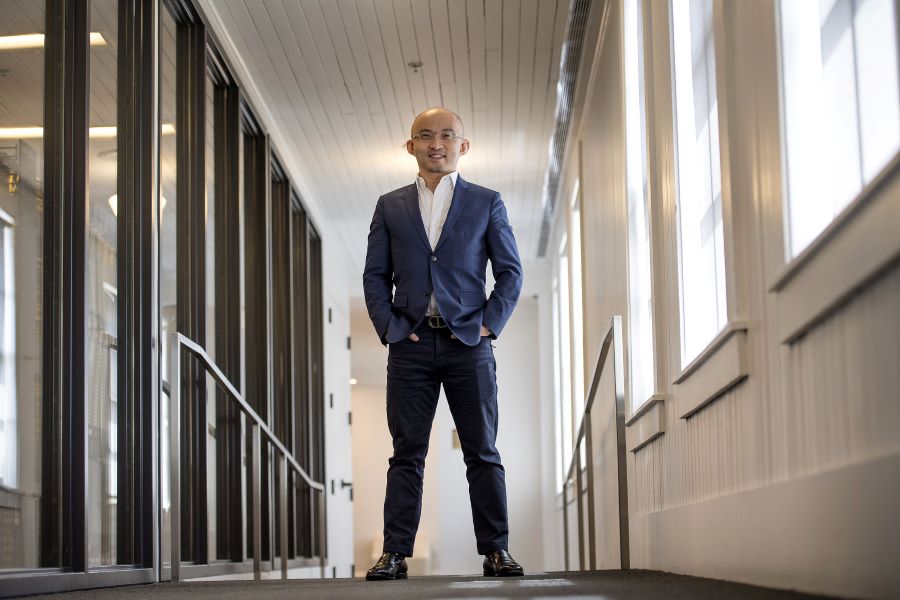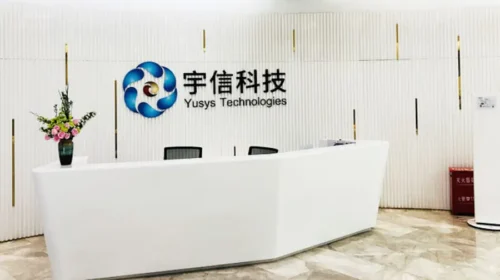Investment Bank China Renaissance Is Reborn on First-Quarter IPO Boom

Company’s deal volume rose six-fold in first three months of 2021, as it helped to underwrite Kuaishou’s blockbuster Hong Kong listing (Photo above of Renaissance founder Bao Fan)
Key points:
- China Renaissance has reported a banner first-quarter on an explosion of IPOs by Chinese tech companies
- The investment bank faces several headwinds, including growing movement by big Wall Street banks into its backyard
By Ben Livesey
Boutique dealmaker and private equity investor China Renaissance Holdings Ltd. (1911.HK) has been going gangbusters this year. The self-proclaimed one-stop shop for Chinese “new economy” startups was involved in nine IPOs in 2020 and has many more on its plate this year, with the $5.4 billion Hong Kong listing of online video giant Kuaishou in February already under its belt.
The Beijing-based company began this year as it ended 2020, on fire in the cauldron of Hong Kong’s white-hot IPO market, according to a first-quarter update it released last week.
In the quarter alone, the Hong Kong-listed company advised on 22 transactions, nearly triple the eight a year earlier, while deal volume increased six-fold to 18 billion yuan ($2.8 billion). Its other key business as a private equity investor continued to provide additional gains as its portfolio investments rose in value.
China Renaissance is firing on all cylinders by advising companies from its investment portfolio in their early stages, helping them to grow and ultimately sell themselves or make IPOs. For example, its portfolio company Kuaishou earlier this year made the largest internet IPO since Uber in 2019, netting China Renaissance not only fees as joint sponsor of the share sale, but also gains from its earlier investment in the company.
Like a racehorse, China Renaissance’s business model works well when conditions are favorable. That’s certainly been the case since the second half of last year, which has seen a near nonstop stream of Chinese companies listing in their home markets of Shanghai and Shenzhen, as well as offshore in Hong Kong and New York.
China Renaissance has been one of the major beneficiaries of that boom, which is still going strong despite a global pandemic and ever-increasing U.S.-China tensions that frequently spill over into the business and financial realms.
After Kuaishou’s high-profile IPO in early February, China Renaissance shares hit an all-time high of HK$31.80 ($4.10) later that month. The stock has sagged somewhat as the euphoria wore off, but its latest close of HK$21.35 is still up 27% year-to-date and is nearly doubled its level from a year ago.
While China Renaissance has thrived in the current booming market, the fact remains that it operates in a crowded field and its shares have yet to surpass the listing price of HK$31.80 from their 2018 IPO. Its top Chinese competitors include Shanghai- and Hong Kong-listed China International Capital Corp. (CICC), which offers a similar array of services including investment banking, private equity and wealth management and also posted knockout 2020 results.
The list also includes Hong Kong-traded Fosun International, the conglomerate that diversified into private equity investing and asset management; Hillhouse Capital Management, which is raising about $18 billion for three new funds; Hopu Investment Management; Yunfeng Capital, a Chinese private equity firm co-founded by Jack Ma; and Trustbridge Partners.
Of the three listed companies, China Renaissance has easily performed the best over the last year. By comparison, CICC’s Hong Kong shares are up 52% over the last 12 months, while Fosun is up by a modest 17%. Despite its strong performance, China Renaissance shares are current laggards in terms of valuation. The stock now trades at a price-to-earnings (PE) ratio of 8.5, below the roughly 10.5 for both CICC and Fosun, and trailing the 12.3 for the industry.
Bumpy Road
Founded in 2005 by former Morgan Stanley banker Bao Fan, China Renaissance has had a bumpy road since its 2018 listing. The emergence of highly-valued Chinese startups began drying up not long after its shares began trading, and last May its shares hit an all-time low of just a third of their listing price after 2019 investment banking revenue fell 30% from the previous year.
The company’s fortunes then reversed last year, as more Chinese tech firms went public and its advisory business took off. By the end of 2020, it was seeking to raise money for two new tech-oriented funds, had hired a group president and was expanding its banking team. Its investment banking revenue jumped 44% for the year, investment management revenue more than doubled and its net profit more than tripled to surpass 1 billion yuan.
Despite its recent strong performance, a looming challenge for China Renaissance and its rivals could be a growing tide of Chinese companies looking to list domestically amid deteriorating relations between Beijing and Washington. China has encouraged such listings, where China Renaissance has no real competitive advantage over its larger field of domestic peers, as it tries to populate its 2-year-old Nasdaq-style STAR Market for high-growth tech firms.
China Renaissance’s fortunes are closely tied to the Chinese IPO market, particularly for offshore listings where the company has its strongest advantage. While it’s easy to look at the blockbuster 2020 results and think this year and next will be the same, that won’t necessarily be the case.
After what may have been the best quarter ever for new Asia listings, lackluster debuts are on the increase amid signs that demand may be tapering off. Some huge feasts could still be in the offing, especially when TikTok parent ByteDance finally comes to market. But the broader tide may be rolling out.
The potential for an economic slowdown in China post-Covid remains another overhang, as do the risks of rising inflation and a surging yuan that could hurt exports. Then there’s also the risk that China’s tech industry will continue to endure further oversight and antitrust scrutiny.
There’s also the question of competing with the big boys. While China Renaissance is strong against its domestic rivals, it may find the going gets tough as Wall Street’s big guns like Goldman Sachs and JPMorgan aggressively build out their Chinese business following Beijing’s nod allowing foreign banks to control their mainland joint ventures.
To maintain its recent growth China Renaissance will need to keep raising investment funds and finding promising startups to back, and maintain relationships with clients whose trust it has worked hard to earn. Demand for its private equity advisory and fledgling wealth management services could cushion the company when IPOs dwindle, which is inevitable.
At the end of the day 2021 should be a decent year for the company, but beyond that could be tougher. For its part, management sees no reason why China Renaissance can’t continue to repeat the pattern of doubling its business every three years or so. That may be easy during the boom times, though such bullishness also warrants some healthy skepticism from investors.
To subscribe to Bamboo Works weekly newsletter, click here






